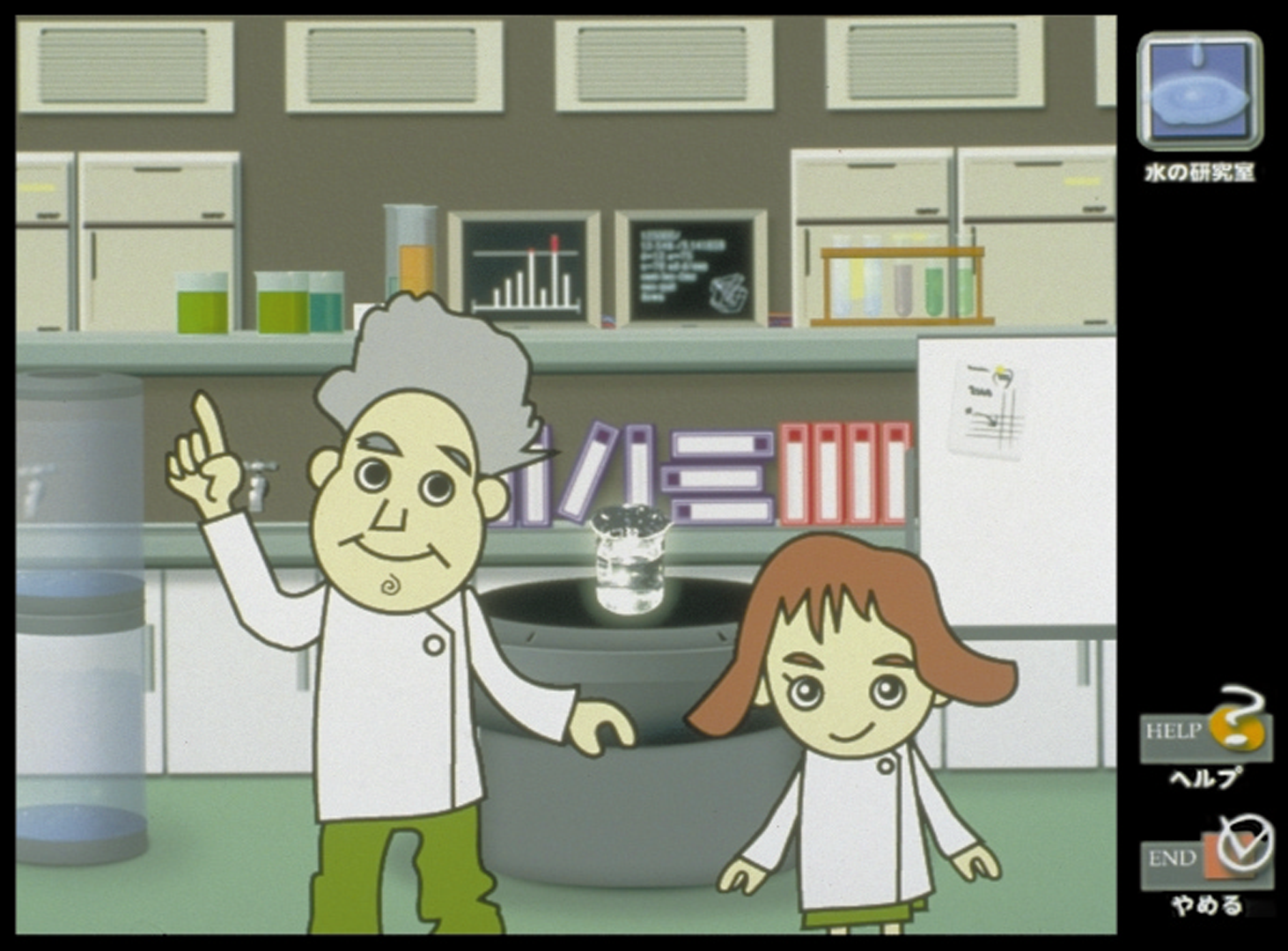“Virtual Science Laboratory” by Masuda
Conference:
Type(s):
Title:
- Virtual Science Laboratory
Presenter(s)/Author(s):
Abstract:
Virtual Science Laboratory is an interactive kiosk program with 2D character animation, 3D computer graphics, and actual tools and samples, imaginatively combined for the purpose of letting ordinary people, especially junior high and high school pupils, experience how scientists analyze environmental pollution, the hygienic condition of various food products, and other matters related to public health. Users are presented with a variety of actual samples or their mock-ups (for example, a piece of food, river water in a flask, etc.) and asked to analyze one of them in a scientifically appropriate manner. When they pick up the sample or mock-up and place it in front of our computer set-up, they are taken into the interior of the virtual (3D CGI) laboratory and greeted by a delightful pair of 2D animated characters: a seasoned scientist named Dr. Hygiene and a little girl, Ms. Ecolo. The participants’ samples are represented in 3D CGI, and Dr. Hygiene shows them how to work on their samples in an interactive fashion. Dr. Hygiene is a bit absent-minded, and his instructions might sound a little confusing now and then, but when that happens Ms. Ecolo comes in to help the visitors.
In order to analyze their samples, visitors must interact with a variety of experimental tools in multimedia representations. They can see live-action video footage of their operation in a first-person point of view if they handle the equipment correctly. The result of the analysis differs depending on how visitors conduct it, so they feel as if they are real research scientists.
For difficult technical terms and measures, visitors refer to the Terminology Dictionary that is linked in the computer network and further linked to a variety of Internet sites related to the laboratory’s subject-matter, so that visitors have access to more detailed information. Sometimes, a quiz is presented to visitors so they can confirm the results.
This program was originally developed for the Gunma Prefectural Institute of Public Health and Environmental Science in Japan, where scientists are actually involved in analyzing air, water, food products, and pathogenic microbes. In an exhibit hall at the
Institute, this kiosk informs the general public about the institute’s activities and purposes. The program is intended to make those visitors, especially junior high and older pupils, more conscious of the environment and hygienic conditions in their communities
and help them to lead a healthier life.




